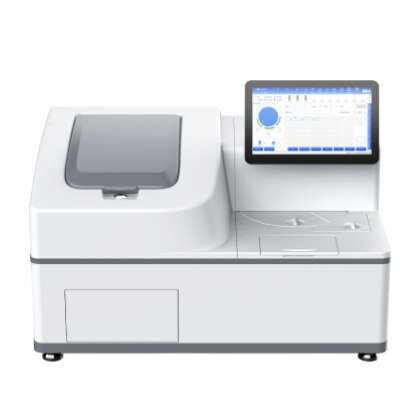Gel Encapsulation Transport System Targets Disease-Related Cells
By LabMedica International staff writers
Posted on 10 Aug 2018
A novel therapeutic approach uses drugs encapsulated within galacto‐oligosaccharide gel capsules to target diseases that have accumulated a high percentage of senescent cells.Posted on 10 Aug 2018
Senescent cells are aged or damaged cells that no longer are able to perform their normal roles. These cells interfere with the functioning of the tissue in which they accumulate, and eliminating them is considered to be a promising therapeutic approach.

Image: The figure shows two views, frontal and lateral, of the image obtained by CT of the lungs of a mouse with fibrosis (grey areas) before and after receiving nano-therapy directed at senescent cells (Photo courtesy of Guillem Garaulet and Francisca Mulero, Institute for Research in Biomedicine).
Investigators at the Institute for Research in Biomedicine (Barcelona, Spain) took advantage of the high lysosomal beta‐galactosidase activity of senescent cells to design a drug delivery system based on the encapsulation of drugs with galacto‐oligosaccharides and their delivery to lysosomes via endocytosis.
The investigators reported in the July 16, 2018, online edition of the journal EMBO Molecular Medicine that gal‐encapsulated fluorophores were preferentially released within senescent cells in mice. In a model of chemotherapy‐induced senescence, gal‐encapsulated cytotoxic drugs targeted senescent tumor cells and improved tumor xenograft regression in combination with the drug palbociclib.
In a model of pulmonary fibrosis in mice, gal‐encapsulated cytotoxic agents targeted senescent cells, reducing collagen deposition and restoring pulmonary function. In addition, gal‐encapsulation reduced the toxic side effects of the cytotoxic drugs. Thus, drug delivery into senescent cells opened new diagnostic and therapeutic applications for senescence‐associated disorders.
Senior author Dr. Manuel Serrano, head of the cellular plasticity and disease laboratory at the Institute for Research in Biomedicine, said, "This nanocarrier may pave the way for new therapeutic approaches for serious conditions, such as pulmonary fibrosis or to eliminate chemotherapy-induced senescent cells."
Related Links:
Institute for Research in Biomedicine













